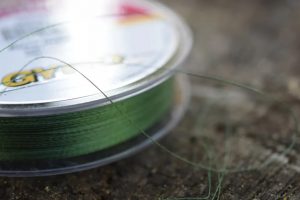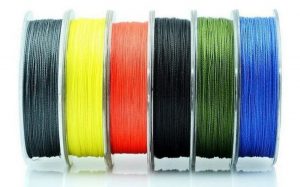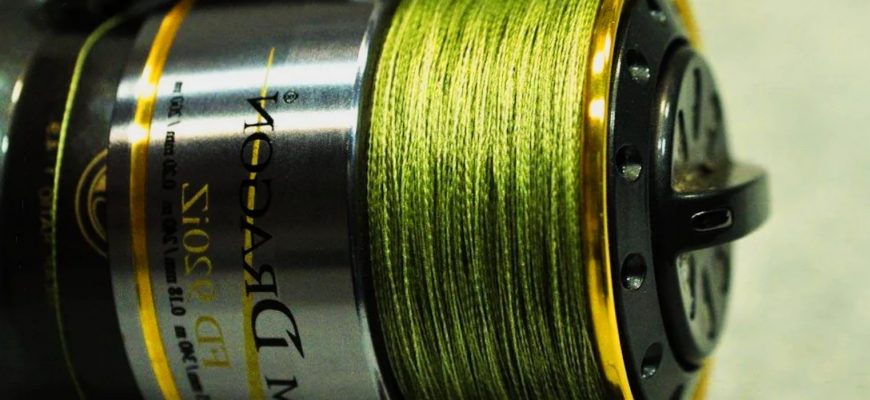Braided fishing line, also known as “braided line,” is a popular type of fishing line made from several strands of synthetic fibers that are tightly woven together. The manufacturing process involves weaving together several strands of polyethylene, Spectra, or Dyneema fibers to create a single line that is much stronger and more durable than monofilament or fluorocarbon lines. Braided line has been used in fishing for centuries, and its popularity has only grown in recent years due to its many advantages.
Why Use Braided Line
Advantages and Disadvantages Compared to Other Types of Fishing Line
One of the primary advantages of braided line is its strength. It can withstand greater tension than other types of line, making it an excellent choice for catching larger fish. Additionally, braided line has little to no stretch, which provides greater sensitivity when feeling for bites and setting hooks. However, one of the main disadvantages of braided line is its visibility in the water, which can spook some fish.
How to Choose Braided Line
Factors to Consider When Selecting Line, Including Test, Diameter, Color, and Length
When choosing braided line, several factors should be taken into consideration. These include the line’s test strength, diameter, color, and length. The test strength refers to the amount of weight the line can hold before breaking, while the diameter determines how easily the line can be seen in the water. Color is another critical factor, as brighter colors may be more visible to fish. Finally, the length of the line will depend on the type of fishing and the size of the fish being targeted.
How to Properly Use Braided Line
Tips and Recommendations for Using Braided Line in Different Fishing Conditions and Styles
Braided line can be used in a variety of fishing conditions and styles, including freshwater and saltwater fishing. When fishing with braided line, it is essential to tie strong knots and use appropriate leaders to prevent the line from breaking. Additionally, anglers should be aware of the line’s lack of stretch, which can cause hooks to be set too hard and fish to be lost. Overall, using braided line requires a slightly different technique than other types of fishing line, but with practice, it can be an effective tool for catching fish.

How to Maintain and Care for Braided Line
Instructions for Cleaning, Lubricating, and Storing Braided Line
To prolong the life of braided line, it is essential to properly maintain and care for it. This includes regularly cleaning the line with warm soapy water and a soft cloth, lubricating it with silicone spray or another lubricant, and storing it in a cool, dry place away from direct sunlight. By following these simple steps, anglers can extend the life of their braided line and ensure it performs at its best.
How to Connect Braided Line with Other Types of Fishing Line
Description of Various Methods for Connecting Braided Line with Monofilament or Fluorocarbon Line
Connecting braided line with other types of fishing line requires specific knots and techniques to prevent the line from slipping or breaking. One common method is to use a double uni knot to join the two lines, while another method is to use a swivel to connect the braided line with a monofilament or fluorocarbon leader. Anglers should experiment with different techniques to find the method that works best for their specific fishing conditions and styles.
Popular Types of Braided Line
Overview of Various Types of Braided Line, Including Multi-Strand, Four-Strand, and Eight-Strand Lines
There are several types of braided line available on the market, each with its own unique characteristics and advantages.
- Multi-carrier braided line: This type of braided line is made of several strands of fibers that are twisted together. Multi-carrier braided lines are known for their strength, sensitivity, and durability.
- Four-strand braided line: Four-strand braided line is made of four strands of fibers that are braided together. This type of braided line is known for its sensitivity, low stretch, and high strength.
- Eight-strand braided line: Eight-strand braided line is made of eight strands of fibers that are tightly braided together. This type of braided line is known for its smoothness, sensitivity, and strength.
When choosing a braided line, there are several factors to consider:
- Test: The test refers to the amount of weight a braided line can handle. It is important to choose a braided line with a test that matches the weight of the fish you are targeting.
- Diameter: The diameter of the braided line is also important to consider. A thinner diameter means less resistance in the water, which can be while others opt for a clear or low-visibility line.
- Length: The length of the braided line depends on the type of fishing you are doing and the size of the reel you are using. It is important to choose a length that is appropriate for your needs.

Once you have chosen the right braided line, it is important to know how to use it properly. Here are some tips:
- Use a leader: A leader is a separate piece of fishing line that is attached to the end of the braided line. It can help to prevent the braided line from being damaged by rocks or other obstacles in the water.
- Use a monofilament backing: A monofilament backing can help to fill up the spool of your reel and prevent the braided line from slipping.
- Tie strong knots: It is important to use strong knots when tying the braided line to your hooks or lures. Some popular knots include the Palomar knot and the improved clinch knot.
- Watch for line twists: Braided line can be prone to twisting, which can affect your casting distance and accuracy. Be sure to check your line for twists regularly and use a swivel to prevent them.
- Use a lubricant: A lubricant can help to prolong the life of your braided line by reducing friction and preventing it from drying out.
In conclusion, braided line is a versatile and strong fishing line that can be a great option for many types of fishing. By considering the different types of braided line available, as well as factors like test, diameter, color, and length, and following proper usage and maintenance techniques, anglers can make the most of this innovative fishing line.
